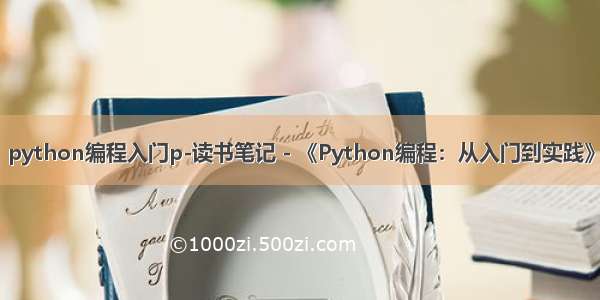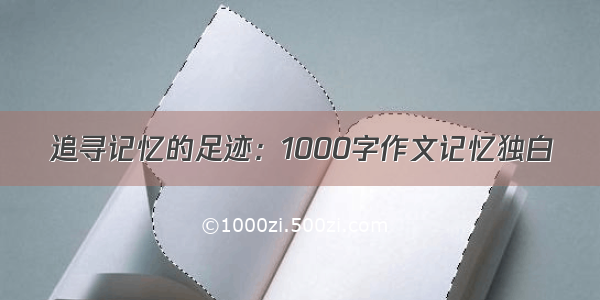
注: 本文的大部分代码示例来自书籍《Python编程:从入门到实践》。
一、变量:
命名:
(1)变量名只能包含字母、数字和下划线。变量名可以字母或下划线打头,但不能以数字打头
(2)变量名不能包含空格,但可使用下划线来分隔其中的单词。
(3)不要将Python关键字和函数名用作变量名,即不要使用Python保留用于特殊用途的单词,如print
头文件声明: #-- coding: utf-8 --
二、数据类型:
(1)数字(Number):num = 123
(2)布尔型:True 、 False
(3)字符型(char):
str = "hello"
str[1]:取第2个字符
str[1:-1:2]: 开始位置,结束位置(-1表示最后),步长.
len(str)
str.title():首字母大写
str.rstrip() lstrip() strip():处理空白字符串
str(numer): 转化成字符型
(4)列表(list):list = ["huwentao","xiaozhou","tengjiang","mayan"]
list.append()
list.insert(0, "")
del list[0]
list.pop()
list.remove():根据值来删除
list.sort()
(5)元组(tuple):不可修改 tuple = ("huwentao","xiaozhou","tengjiang","mayan")
(6)字典(dict):
user_0 = {
"username": "efermi",
"first": "enrico",
"last": "fermi",
}
❶ for key, value in user_0.items():
❷ print(" Key: " + key)
❸ print("Value: " + value)
三、语句
(1)if语句:
age = 12
❶ if age < 4:
print("Your admission cost is $0.")
❷ elif age < 18:
print("Your admission cost is $5.")
❸ else:
print("Your admission cost is $10.")
(2)for循环
(3)while循环
current_number = 1
while current_number <= 5:
print(current_number)
current_number += 1
for循环是一种遍历列表的有效方式,但在for循环中不应修改列表,否则将导致Python难以跟踪其中的元素。要在遍历列表的同时对其进行修改,可使用while循环。通过将while循环同列表和字典结合起来使用,可收集、存储并组织大量输入,供以后查看和显示。
四、用户输入
函数input()让程序暂停运行,等待用户输入一些文本。获取用户输入后,Python将其存储在一个变量中,以方便你使用。
message = input("Tell me something, and I will repeat it back to you: ")
print(message)
五、函数
基本函数的定义:
def greet_user(username):
"""显示简单的问候语"""
print("Hello, " + username.title() + "!")
greet_user("jesse")
使用默认值:
def describe_pet(pet_name, animal_type="dog"):
"""显示宠物的信息"""
print(" I have a " + animal_type + ".")
print("My " + animal_type + ""s name is " + pet_name.title() + ".")
describe_pet(pet_name="willie")
传递任意数量的形参
def make_pizza(*toppings):
"""打印顾客点的所有配料"""
print(toppings)
make_pizza("pepperoni")
make_pizza("mushrooms", "green peppers", "extra cheese")
六、类
基础类的定义:
class Car():
"""一次模拟汽车的简单尝试"""
❶ def __init__(self, make, model, year):
"""初始化描述汽车的属性"""
self.make = make
self.model = model
self.year = year
❷ def get_descriptive_name(self):
"""返回整洁的描述性信息"""
long_name = str(self.year) + " " + self.make + " " + self.model
return long_name.title()
❸ my_new_car = Car("audi", "a4", )
print(my_new_car.get_descriptive_name())
类的继承:
class Car():
"""一次模拟汽车的简单尝试"""
def __init__(self, make, model, year):
self.make = make
self.model = model
self.year = year
self.odometer_reading = 0
def get_descriptive_name(self):
long_name = str(self.year) + " " + self.make + " " + self.model
return long_name.title()
def read_odometer(self):
print("This car has " + str(self.odometer_reading) + " miles on it.")
def update_odometer(self, mileage):
if mileage >= self.odometer_reading:
self.odometer_reading = mileage
else:
print("You can"t roll back an odometer!")
def increment_odometer(self, miles):
self.odometer_reading += miles
❷ class ElectricCar(Car):
"""电动汽车的独特之处"""
❸ def __init__(self, make, model, year):
"""初始化父类的属性"""
❹ super().__init__(make, model, year)
❺ my_tesla = ElectricCar("tesla", "model s
可以将实例作为属性来定义一个类
class Car():
--snip--
❶ class Battery():
"""一次模拟电动汽车电瓶的简单尝试"""
❷ def __init__(self, battery_size=70):
"""初始化电瓶的属性"""
self.battery_size = battery_size
❸ def describe_battery(self):
"""打印一条描述电瓶容量的消息"""
print("This car has a " + str(self.battery_size) + "-kWh battery.")
class ElectricCar(Car):
"""电动汽车的独特之处"""
def __init__(self, make, model, year):
"""
初始化父类的属性,再初始化电动汽车特有的属性
"""
super().__init__(make, model, year)
❹ self.battery = Battery()
my_tesla = ElectricCar("tesla", "model s", )
print(my_tesla.get_descriptive_name())
my_tesla.battery.describe_battery()


![python基础学习[python编程从入门到实践读书笔记(连载六)]:数据可视化项目第17章](https://1000zi.500zi.com/uploadfile/img/14/791/263c436b0802744b0db7f239ac59aaf6.jpg)
![python基础学习[python编程从入门到实践读书笔记(连载五)]:数据可视化项目第16章](https://1000zi.500zi.com/uploadfile/img/14/791/88995733c6c8a1778b93a9d6188eb616.jpg)
![python基础学习[python编程从入门到实践读书笔记(连载四)]:数据可视化项目第15章](https://1000zi.500zi.com/uploadfile/img/14/791/1db8c87df17e272d480e399bb96350fc.jpg)











